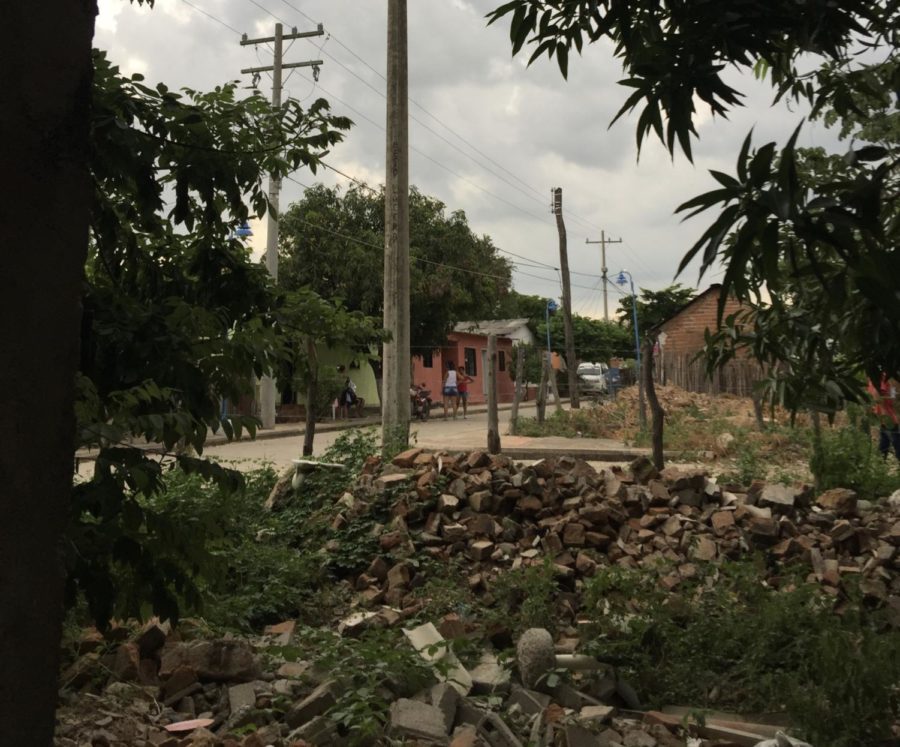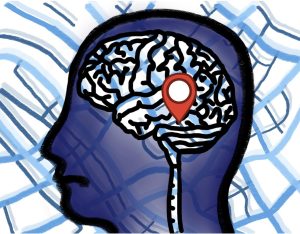Lack of climate change education in schools spelling Earth’s doom
The Sidekick staff writer Nicolas Reyes travelled to Valencia de Jesús, Colombia over the summer to aid in a sustainable compost project. Reyes thinks changing school curriculum to include climate change could help generate the same passion seen in Valencia de Jesús in the United States.
September 17, 2019
Deep green mountains created a backdrop to my view of beggarly houses lining the road to the compost hut. Nearby dogs dipped their muzzles into waste, their spines drastically poking out of their bodies, a reminder of the crippling poverty I was immersing myself in.
The compost hut did not seem like much. In plain view, it was simply a wooden frame clad in a turquoise tarp. However, it is more than that; it is a testament to the fact that a village full of inhabitants who must crane their necks back to gaze up at the U.S. poverty line decided to take action in order to preserve the planet.
When I traveled to Valencia de Jesús, Colombia to take part in a project of cooperating with locals to create a plan for sustainable composting, climate change, pollution and contamination were never in doubt. Solutions were discussed, not conspiracy theories.
In the United States, most people have many more resources available to them. Yet here, we have not been able to make the first step: accepting there is a problem.
The argument of whether climate change is real is arising from our education system. Climate change needs to be taught as a fact in every school in America. We cannot continue to let our children not believe in the inconvenient truth.
Last year, the United Nations published a study stating the world could reach 2.7 degrees Fahrenheit above pre-industrial levels by 2030. If the planet’s people do not make rapid changes, our lives could become a daily struggle of droughts, forest fires and worldwide hunger. The proof of climate change can no longer be ignored.
School districts have varying ways of addressing the topic. At Coppell High School, like many other high schools, the topic is brushed upon briefly in required classes. Sure, students can take classes such as Earth and Space Science and Environmental Science where the climate crisis is a unit of study, but that class is not required. Students who take the said classes likely already have an interest in the topic and in turn are likely to accept climate change as fact.
This cannot be said about the rest of the student body.
The issue lies in the biology curriculum, a mandatory class. Climate change is covered briefly and when it is, the curriculum makes little to no effort in demonstrating to students that the climate catastrophe is human-caused and very much real. It is discussed in the way the effectiveness of the electoral college is in history classes, as a matter of opinion.
This causes students to believe there is a choice, that one can believe or deny proven science with ease. Because of this, our Congress and our nation’s voters debate whether the issue is even real, not how it should be managed. If this logic was applied to every subject, I would have chosen not to believe in calculus last year. I was pushed to understand complicated math, even if at first I did not understand it. Likewise, students needed to be pushed to understand the climate catastrophe.
Texas, as well as nine other states, have not adopted science education standards that require students to learn about climate change. However, many other states are turning to The Next Generation Science Standards (NGSS), a “K–12 science content standards that set the expectations for what students should know and be able to do.” These standards require that climate change be taught in schools.
If Texas is to be on the right side of history, the state must adopt these standards. However, change can start at a local level through outspoken students making their voices heard to teachers and school administrators.
“We brought in all of our educators this summer to help update the curriculum,” Coppell ISD Assistant Superintendent for Curriculum and Instruction Dr. Angie Applegate said. “They went through a process of identifying high priority learning standards which a line with the skills mandated by the state. Within our district, we have been working on building professional learning communities that ensure that there are certain skills that receive an even higher priority.”
Applegate also expressed her interest in listening to student opinion.
“I’d like to give more voice to the students to hear about what is going on within the curriculum; I want to hear what students are interested in,” Applegate said. “ I want to know if they feel like the curriculum is making a difference.”
History has shown us the nation’s youth can drive change. There is a youth movement brewing but we must provide the uninvolved youth with the knowledge to join the others. It will be the young people of today that will feel the agony of tomorrow if not enough is done. Alone we will not succeed, but together we can.
From a teenager sailing across the Atlantic to raise crowds for a better future, to a nation battering the tree-planting record, to villages tucked in between the Andes Mountains taking the initiative to protect their land, there is a movement taking place around the world.
We can be a part of this. With a change in our curriculum, we will be a part of this.
Follow Nicolas Reyes (nico_reyes19) and @CHSCampusNews on Twitter.











